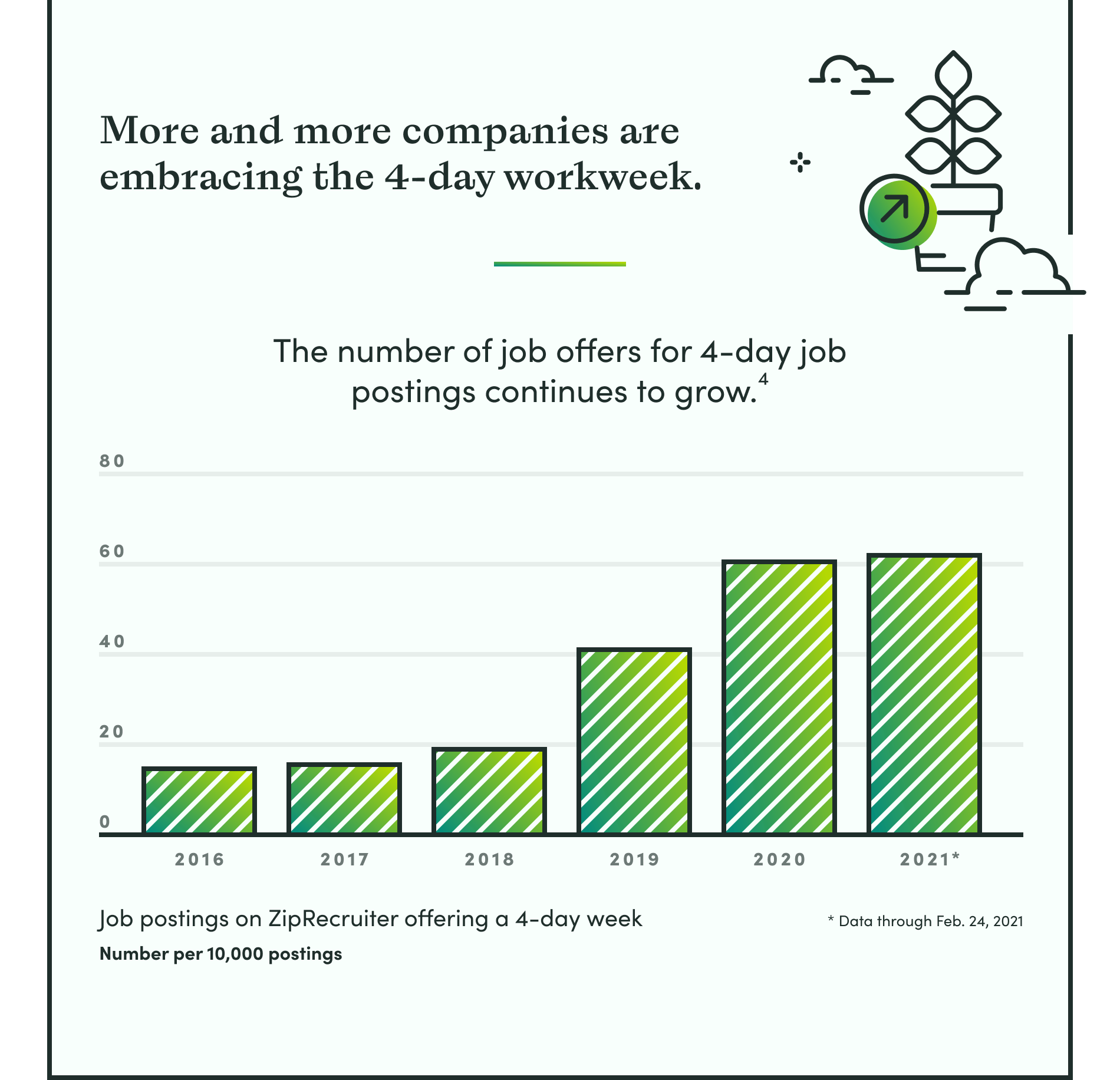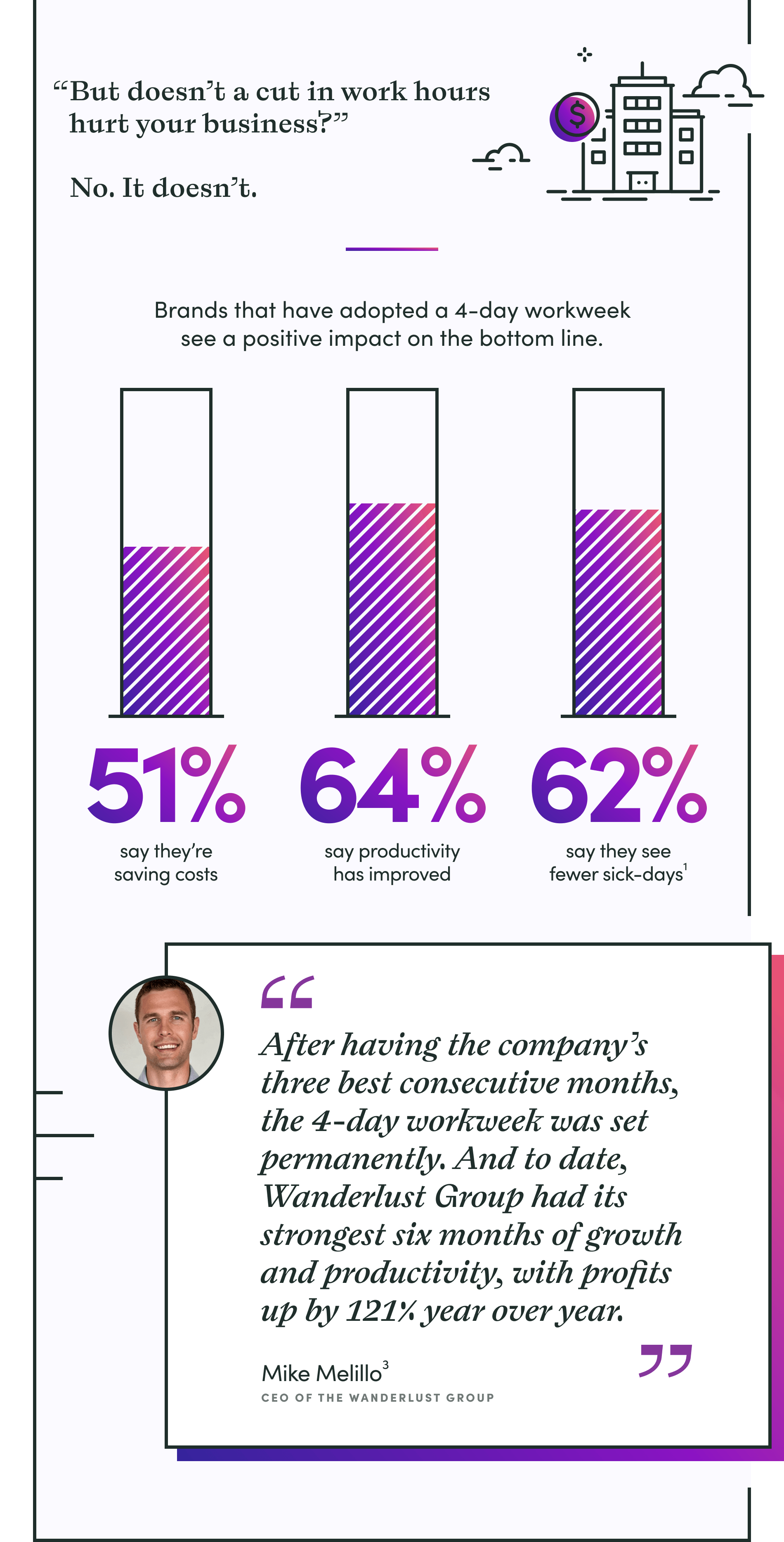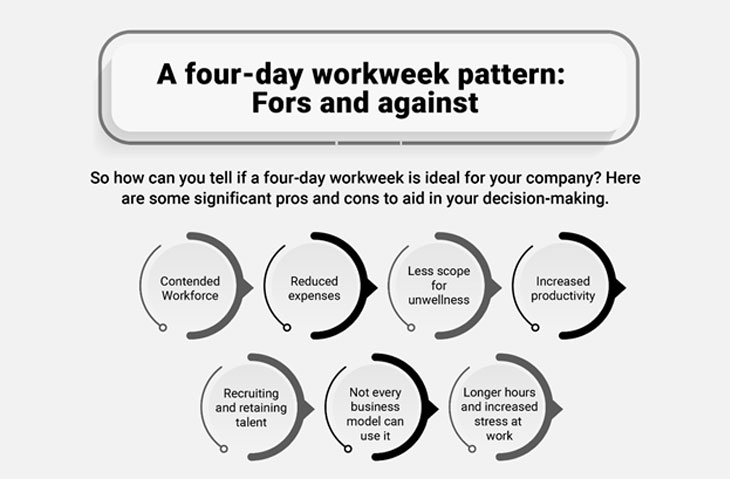The Four-Day Workweek: A Growing Trend and Its Implications
Related Articles: The Four-Day Workweek: A Growing Trend and Its Implications
Introduction
With great pleasure, we will explore the intriguing topic related to The Four-Day Workweek: A Growing Trend and Its Implications. Let’s weave interesting information and offer fresh perspectives to the readers.
Table of Content
The Four-Day Workweek: A Growing Trend and Its Implications

The traditional five-day workweek has been a cornerstone of the modern workforce for over a century. However, a growing number of employers and employees are exploring alternative work arrangements, with the four-day workweek emerging as a particularly popular model. This shift is driven by a complex interplay of factors, including technological advancements, changing societal values, and a growing desire for work-life balance.
Understanding the Four-Day Workweek
The four-day workweek, as the name suggests, involves working four days a week, typically with longer daily hours, often 10 hours, while maintaining the same weekly workload. This model offers a compelling proposition for both employers and employees, promising increased productivity, improved employee well-being, and a more sustainable work-life balance.
Benefits of the Four-Day Workweek
The implementation of a four-day workweek has the potential to yield significant benefits for both employers and employees:
For Employees:
- Enhanced Work-Life Balance: The most significant benefit is the increased flexibility and time for personal pursuits. Employees can spend more time with family, pursue hobbies, attend to personal commitments, and generally enjoy a better quality of life.
- Reduced Stress and Burnout: The shorter workweek can alleviate stress and burnout, leading to improved mental and physical health. Studies have shown that employees working a four-day workweek experience lower levels of stress and anxiety.
- Increased Productivity: While counterintuitive, some research suggests that a four-day workweek can actually boost productivity. Employees may feel more motivated and engaged when they have more time for rest and rejuvenation.
- Improved Employee Morale and Retention: A four-day workweek can enhance employee morale and reduce turnover rates. Employees feel valued and appreciated when their work-life balance is prioritized.
For Employers:
- Increased Productivity: Research indicates that a four-day workweek can lead to increased productivity, as employees are more focused and engaged during their working hours.
- Reduced Costs: Lower absenteeism, reduced overtime pay, and a decrease in employee turnover can lead to significant cost savings for employers.
- Enhanced Employee Recruitment and Retention: The attractiveness of a four-day workweek can make it easier for employers to attract and retain top talent.
- Improved Company Image and Reputation: Implementing a four-day workweek can enhance a company’s image and reputation as a progressive and employee-centric organization.
Challenges and Considerations
While the four-day workweek holds immense potential, its implementation also presents challenges that need to be carefully considered:
- Operational Adjustments: Transitioning to a four-day workweek requires careful planning and adjustments to operational processes, including scheduling, customer service, and workload distribution.
- Industry-Specific Considerations: The feasibility of a four-day workweek varies significantly across industries. Certain industries, such as healthcare, public safety, and retail, may face unique challenges in implementing this model.
- Employee Buy-In: Securing employee buy-in is crucial for the success of a four-day workweek. Employees need to be engaged in the process and understand the benefits and potential challenges.
- Potential for Increased Workload: The compressed workweek may lead to an increase in workload on the four days worked, potentially causing stress and burnout if not managed effectively.
Industries Embracing the Four-Day Workweek
The adoption of the four-day workweek is gaining traction across various industries, with notable examples emerging in:
- Technology: Tech companies, known for their flexible work arrangements, have been early adopters of the four-day workweek. Examples include Microsoft, Shopify, and Buffer.
- Finance: Financial institutions are increasingly exploring the four-day workweek, recognizing its potential to improve employee well-being and productivity.
- Retail: Some retail companies are experimenting with shortened workweeks for certain employees, particularly those in customer service roles.
- Manufacturing: Manufacturing companies are exploring the four-day workweek as a means to enhance productivity and improve employee retention.
FAQs
Q: Is a four-day workweek suitable for all industries?
A: No, the feasibility of a four-day workweek varies across industries. Industries with critical, round-the-clock operations, such as healthcare, public safety, and some manufacturing sectors, may face challenges in implementing this model. However, even in these industries, there may be opportunities to experiment with flexible work arrangements for specific roles.
Q: What are the key factors to consider before implementing a four-day workweek?
A: Prior to implementing a four-day workweek, employers should carefully consider factors such as industry-specific requirements, operational logistics, employee preferences, and potential impact on productivity and customer service.
Q: How can employers ensure a smooth transition to a four-day workweek?
A: A successful transition requires clear communication, employee engagement, pilot programs to test the model, and careful planning to address potential challenges.
Q: What are some common concerns about the four-day workweek?
A: Common concerns include potential for increased workload, difficulty in managing customer service, and the potential for decreased productivity. However, these concerns can be addressed through careful planning, effective communication, and monitoring of results.
Tips for Implementing a Four-Day Workweek
- Start with a Pilot Program: Implement a pilot program with a small group of employees to test the model and gather feedback before rolling it out to the entire organization.
- Clear Communication and Employee Engagement: Communicate the rationale for the change and involve employees in the decision-making process to ensure buy-in and understanding.
- Flexible Scheduling: Offer flexible scheduling options to accommodate individual needs and preferences.
- Training and Support: Provide training and support to employees to help them adjust to the new work schedule and manage their workload effectively.
- Monitor Results and Adjust: Regularly monitor the impact of the four-day workweek on productivity, employee well-being, and customer service. Be prepared to make adjustments as needed.
Conclusion
The four-day workweek represents a significant shift in the way we think about work and its relationship to our personal lives. While challenges exist, the potential benefits for both employers and employees are undeniable. As the model continues to gain traction, it is likely to have a profound impact on the future of work, promoting a more sustainable, balanced, and fulfilling work environment for all.








Closure
Thus, we hope this article has provided valuable insights into The Four-Day Workweek: A Growing Trend and Its Implications. We hope you find this article informative and beneficial. See you in our next article!
